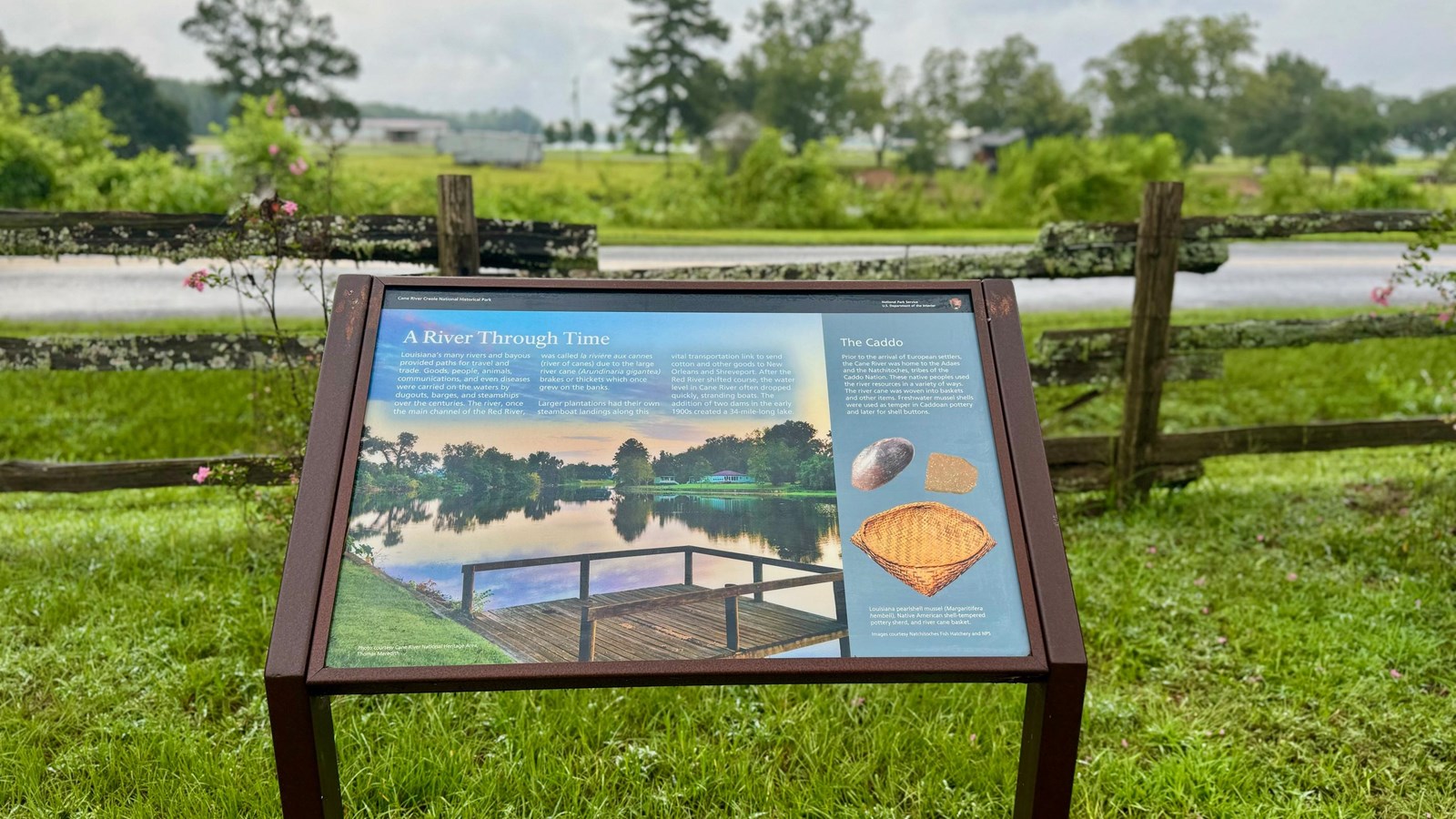Last updated: September 8, 2024
Place
A River Through Time

Christy Hoover
Historical/Interpretive Information/Exhibits
Larger plantations had their own steamboat landings along this vital transportation link to send cotton and other goods to New Orleans and Shreveport. After the Red River shifted course, the water level in Cane River often dropped quickly, stranding boats. The addition of two dams in the early 1900s created a 34-mile-long lake.
The Caddo
Prior to the arrival of European settlers, the Cane River was hoe to the Adaes and the Natchitoches, tribes of the Caddo Nation. These native peoples used the river resources in a variety of ways. The river cane was woven into baskets and other items. Freshwater mussel shells were used as temper in Caddoan pottery and later for shell buttons.
Louisiana pearlshell mussel (Margaritifera hembeli), Native American shell-tempered pottery sherd, and river cane basket.
